|
USB-32 Introduce and drivers
download (For the unit with default USB32 interface)
Amanero
combo 384 Intruduce and driver download
(For the unit with the Amanero Combo384 upgrade module)
Audio-gd products had
design and test based on the AP SYS-2722 (The top-drawer
professional equipment in world)
        
Different to the NFB-28:
The NFB-29 is a single ended DAC with headamp and
preamp (+/- 30V DC high voltage power supply ), The NFB-28 is balance DAC with headamp and preamp
(+/-15V DC power supply ). So They had
same output power specs can drive most headphone as well.
If customer like to keep your headphone with single ended connector
(6.3MM),
choice the NFB-29 get better performance than the NFB-28.
If customer had the balance connector headphone or can modify the
headphone with balance connector, choice the NFB-28.
Summarize
Multi-ply shield boards to isolation the power input socket , transformer, power supplies,
digital part and the analog part .
Fully Discrete design built by discrete analog stages without any OPA
and coupling caps in the signal channels, built in DAC, output for headphone (4-pin XLR or 1/4") and preamp
output.
Non- feedback ACSS analog output stage .
The analogy amps working under +/- 30VDC for got the super well
linear and offer high power output in single ended design.
LED display avoids RF disturbance for better
sound quality
Large
R-core transformers and Hi-fi grade parts like DALE resistors, WIMA
caps .
Total of 6-group PSUs are used to purify the power supply , the
analog amp has discrete PSU power supply
Two-channel digitally controlled relay-based volume control to
avoid channel imbalance and improve sound quality.
100 steps volume control , it can
working fine with high and low sensitivity headphones and speakers.
4 digital inputs:
USB / I2S /Optical / Coaxial RCA
2 analog inputs: RCA / RCA
DAC output:
RCA / RCA / ACSS (User can set either variable
output level as preamp or
fixed output level as dedicated DAC )
Headphone output :
4 pin XLR / 1/4" (6.3MM) SE
Static storage mode control software for avoid disturb sound quality
, the MCU output once control data and save in the perform parts
,then stop output data until users next operation.
|
Technology detail
Detail of the Current Conveyor Technology
Impedance matching:
The NFB-29 had two groups analogy RCA inputs ,can connect
external DACs , working as a decent headphone amp .There are a lot different DACs in worth, they had different design
and output impedance . For avoid the sound quality effect by
different DAC's output impedance, in the NFB-29, it had design a pair
single-ended class A FET buffers in the input . All the analogy RCA input
signals through these FET buffers, the output impedance had become
very low, even the source had high or low output impedance.
The FET
buffers working on pure class A state, and it is so short signal
journey , it can keep the sound quality without coloration ,dry and
harsh .
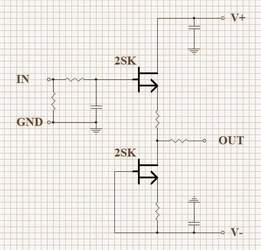
Simple and short signal transfer is best:
The NFB-29 applies the newest ESS high-end Sabre32 DA chip
ES9018 which can support up to 32Bit/384KHz input .
ES9018
in voltage output model , there is -12DB THD+N worst , to be
achieve the best performance of ES9018 , must work in current
output model .
In some other ES9018 built in DAC design ,
ES9018 output signal have to through 3 step OPAs implement analogy
signal process .
The NFB-29 had different design , applies Non-feedback ACSS
design. The ES9018 feed to the ACSS
circuit by balanced model without any OPAs .
The ACSS circuit naturally working in
current model and have design difference current input , it can
transfer the ES9018 current signal to output and implement the I/V
conversion in current model in one ACSS amp . And this ACSS amp only
have one current gain stage , the ES9018 output signal only through
one stage can arrive the output stages .
The shortest signal journey can reproduce the best
detail and dynamic, and almost without sound coloration , It can
show the real performance of the ES9018 .
So our ACSS design is the best combo with
ES9018 achieve the best performance .
Upside in the picture is the standard
ES9018 headphone amp design. The bottom is the NFB-29 design .

The ACSS also is a non-feedback
technology made with fully discrete amplifiers. Most people know the
global
feedback design can offer better specs in test measurements, and
non-feedback can't do well in test measurements but can offer better
sound for the human's ears. Here is a conflict of the classic circuits.
But the ACSS opens a new field, it can offer a least coloration sound
which is more neutral with very low distortion and high linearity. So
it can retain the dynamics, detail and neutral sound but not sound
bright or harsh.
The output buffers are
Non-feedback. For low impedance, we applied a diamond output stage
which is quite less colored than most conventional circuits.
The DAC is without couple
caps to avoid coloration. There are two OPAs built in as the DC serve to
keep the DC offset .
The 32bit / 384K USB interface
outputs a I2S signal to ES9018 .
Super low THD (Test by AP SYS-2722,0DBV output level)
Flat frequency response (Test by AP SYS-2722)
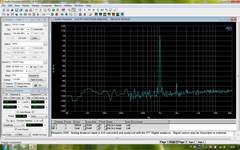
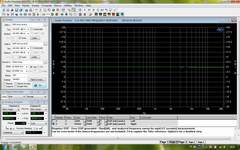
Strong diamond difference output
stages:
The NFB-29 had design a pare diamond difference output stages, every
parts had exact matching before assemble so don't need any human
adjustment .
The
output stages working under + / - 30V DC power supplied, built
in two pair 15W transistors, for offer strong drive
ability , no matter drive the high and low sensitivity headphones
. The diamond different design can avoid switch distortion , it
working as the class A but don't want large idle current .
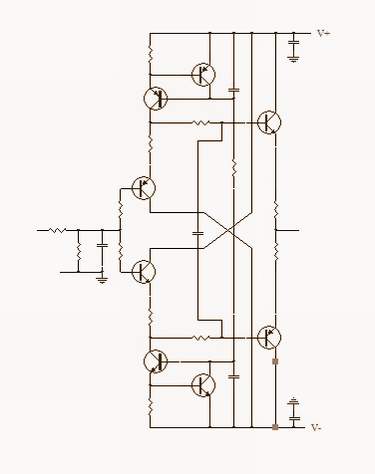
Multi-ply power supplies are the key of sound :
NFB-29 applies the excellent DA chip ES9018 and excellent analog
output stages, but these are not the only keys of the best sound.
The power supply is most important. Even applying the best DA chip
and the best amp, if matched to a average power supply, the total
sound may still be average or sound musical but can't be neutral and
detailed. That is why it is easy to find hi-end grade gears maybe
without the best chips , but with plenteous dedicated
DC supply circuits.
The
NFB-29
uses A total of 6 groups PSU power supply for all
digital and analog circuits.
To achieve high S/N, the
control circuit is powered with separate regulator.
Strong power supply.
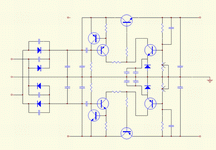
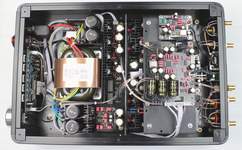
The I/V conversion
volume control without sound degradation:
Usually the volume control can be implemented in the DAC + amplifier
combo in two methods
Method 1: The
volume control is implemented into the digital stage. The major
drawback is that 1 bit of the D/A conversion is lost in every 6DB
volume reduction. So, even though the built-in DA chip is 32 bit, in
fact, only 16 bit may be left at low volume level.
Method 2: The
volume control is implemented in the analog amplifier input stage
through a volume pot to reduce the signal level. However, the volume
pot affects the sound quality adversely. A low grade volume pot
loses the details and creates channels imbalance resulting into
soundstage distortion. Even a high grade volume pot inevitably loses
the details. Both methods degrade the sound quality.
The NFB-29
applies the I/V conversion volume control, the volume control is
just a variable passive I/V conversion being placed at the ACSS
amplifier output, where the output is current signal but not voltage
signal. I/V conversion is to change the volume level from the
current (I) signal to the voltage (V) signal. (Like R-2R D/A chips
output passive I/V conversion) It can keep the signal frequency band
flat while not losing any detail. It does not degrade the sound
quality in every volume level. In front of the volume control, there
are four groups of diamond non-feedback buffer output stages that
offer very low output impedance.
Mark Levinson
also knows that current volume control has great benefits, so in the
volume control of his top grade hi-end preamplifier No.32, he uses
many components to change the voltage (V) signal to current signal
(I), then through the R-2R network to control the volume, and
finally changes back to voltage signal (V) again. NFB-29 simply
works in current (I) signal domain, and technically, it is superior
to the conventional technology due to less conversion.
NFB-29
applies digitally controlled relay-based volume control in 100 steps.
It has 90DB control range ( most other volume control only had
around 70DB range, so the device want to design the gain switches ) allow users
to control the volume level smoothly. NFB-29 has two relay-based
volume control channels through changing the
DALE resistors to control the volume to avoid channel imbalance,
achieving the best performance and sound quality of the gear. While
change the volume, the combine relays break or close, it may had
slightly switch sound on output and disappear while stop change the
volume.
Precise digitally controlled relay-based
volume control.
Fast / Slow two volume control characteristic

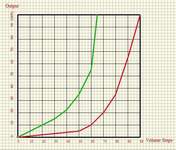
The Multi-ply shield boards for avoid the interrupt:
The NFB-29 had built in Multi-ply shield boards, to separate the transformer, power supply, digital parts and
analogy parts for avoid the different parts had disturb . Even
though the power input IEC socket, it had hide in a copper shield
box .
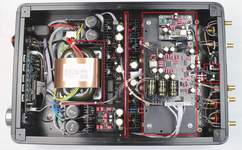
Static storage mode control software:
In most
control softwares design, the MCU will continuously output data to
the perform parts , the MCU had the very high speed, so the output
data become high frequency impulses disturb the audio signal
circuits make the sound worst .
This product had applied static
storage mode control software , the MCU output once control data and
save in the perform parts while just power on and users operate
,then stop output data until users next operation. This design make
the sound quality improve on the clear and transparency .
Components:
Uses all
Hi-end grade components, including DALE resistors, WIMA caps,
custom order NOVER (UK brand) caps, Neutrik headphone output socket,
ect . |

